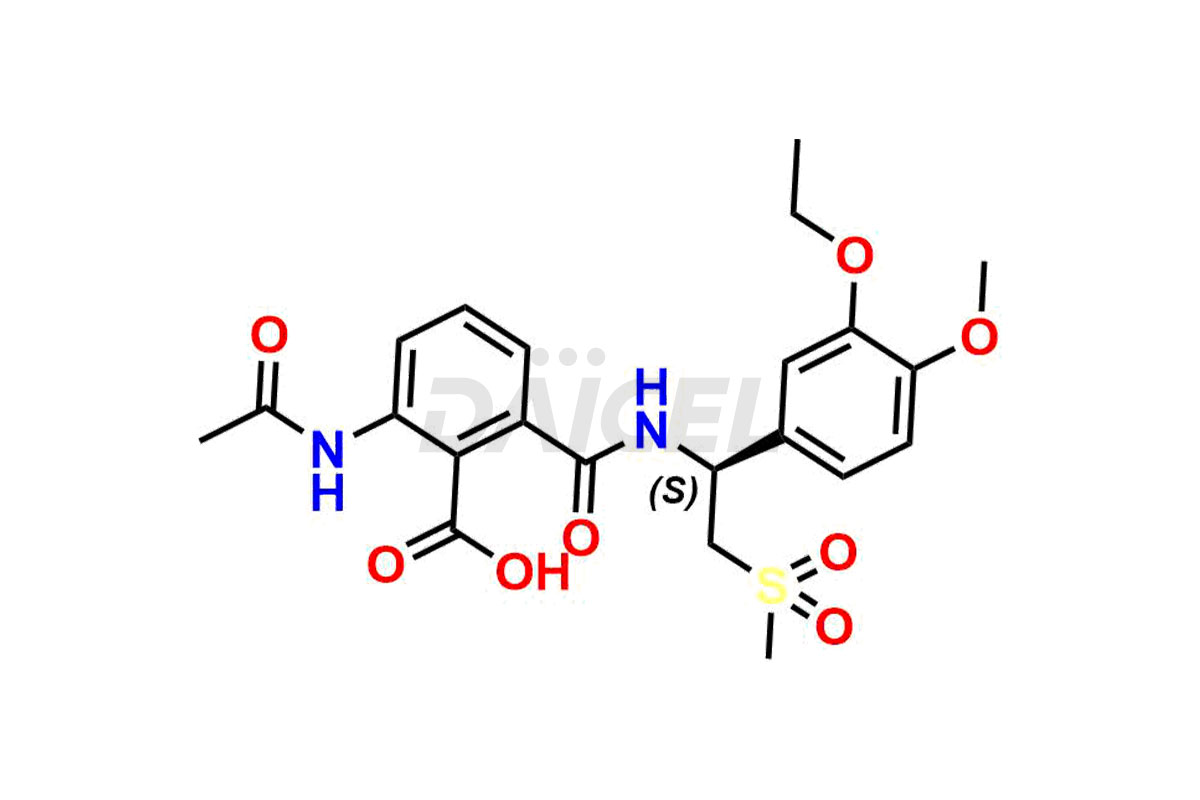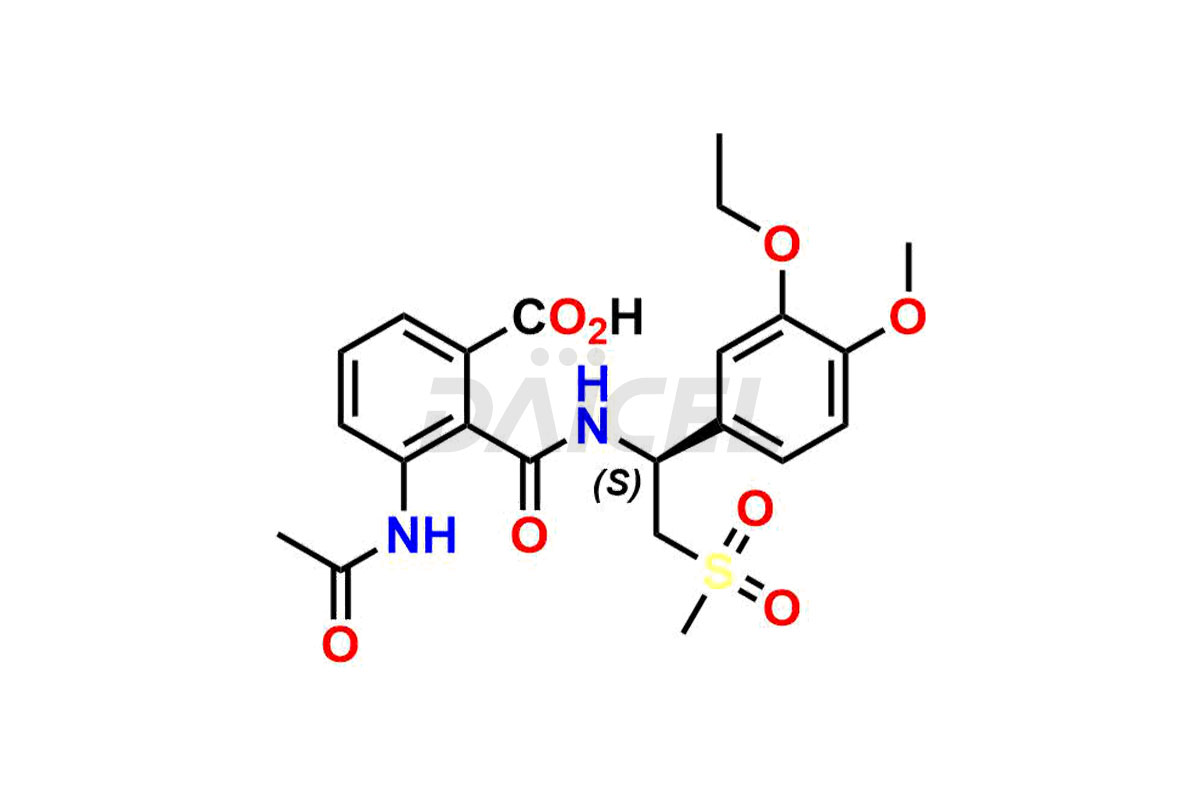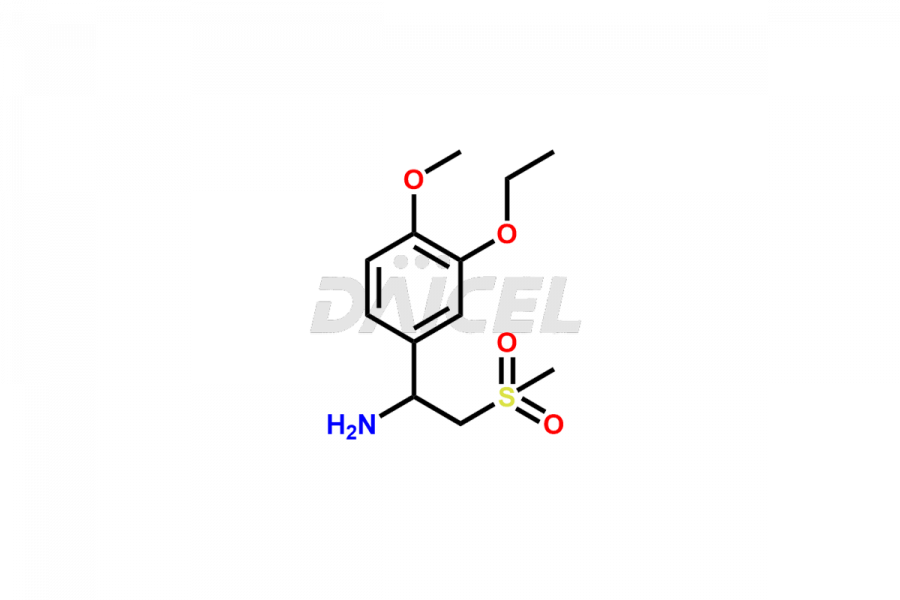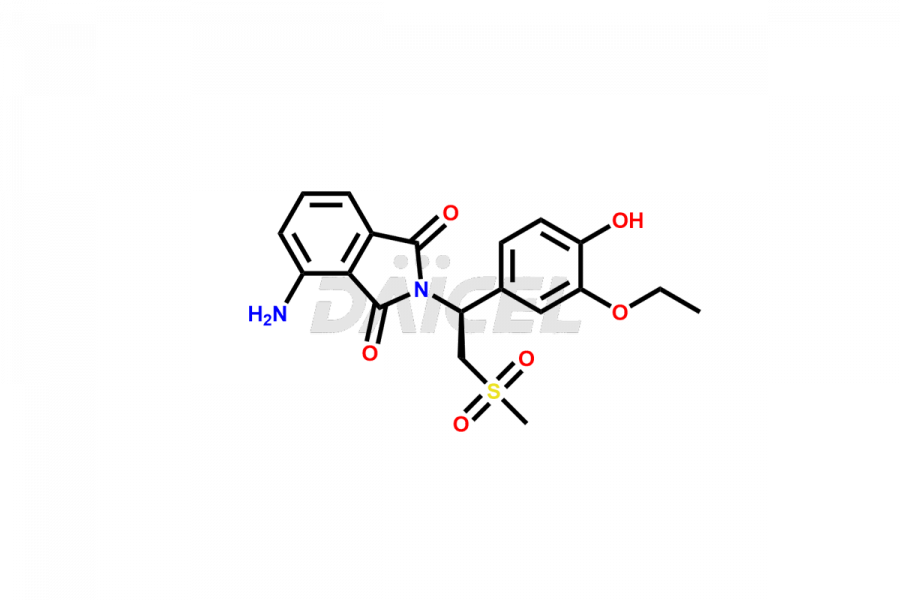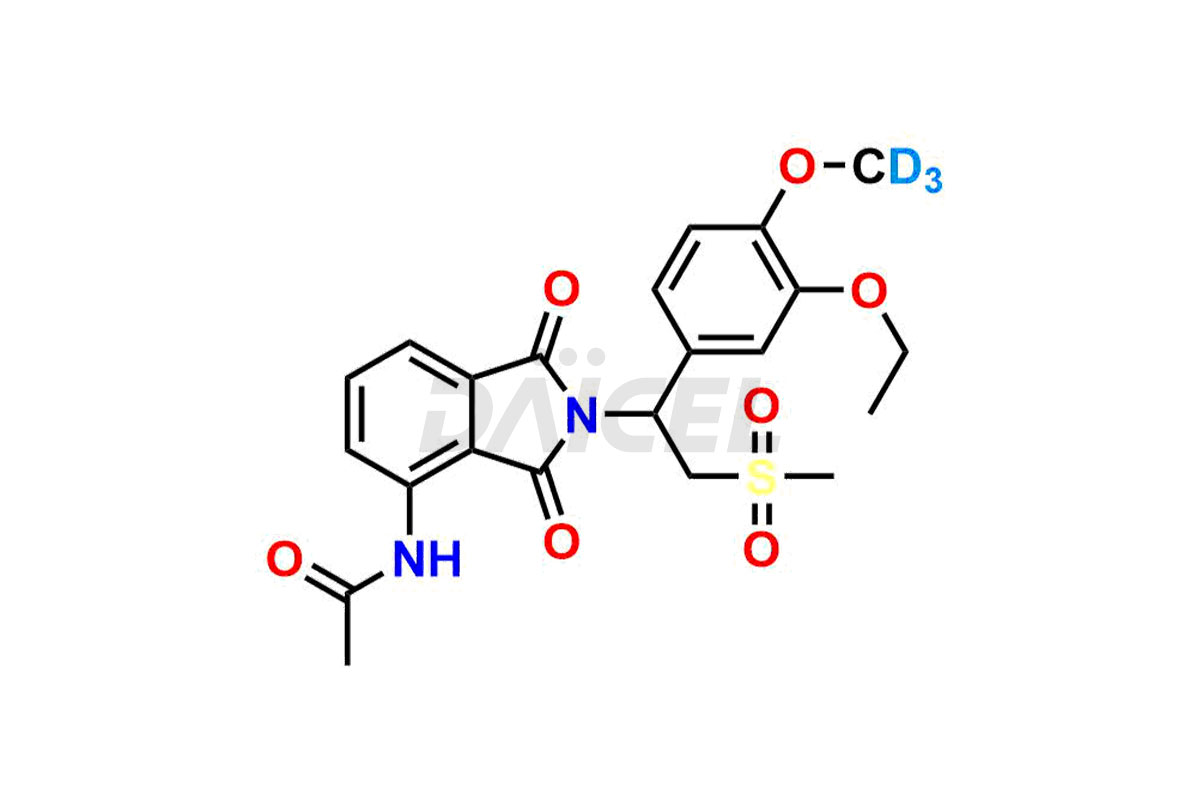Apremilast
General Information
Apremilast Impurities and Apremilast
Daicel Pharma synthesizes high-quality Apremilast impurities, including Apremi+C39:C41 Last Impurity RS-9, Apremilast 2-Acetamido Benzoic Acid Impurity, Apremilast 3-Acetamido Benzoic Acid Impurity, Apremilast Amino Sulfone Impurity, Apremilast Des Acetyl 4-Desmethyl Impurity, Apremilast Impurity RS-7, and O-Desmethyl Apremilast. These impurities are essential for evaluating the quality, stability, and safety of Apremilast, which is an active pharmaceutical ingredient. Additionally, Daicel Pharma offers a customized synthesis of Apremilast impurities for global delivery to meet the specific needs of our customers.
Apremilast [CAS: 608141-41-9] is a medication to treat active psoriatic arthritis. It is an orally available small molecule that acts as an inhibitor of phosphodiesterase-4 (PDE-4) and an immunomodulating agent.
Apremilast: Use and Commercial Availability
Apremilast, available under the brand name Otezla, is an FDA-approved medication for treating psoriatic arthritis, plaque psoriasis, and oral ulcers associated with Behcet disease in adults. Apremilast is the first and only FDA-approved oral medication for treating oral ulcers associated with Behcet disease.
Apremilast Structure and Mechanism of Action 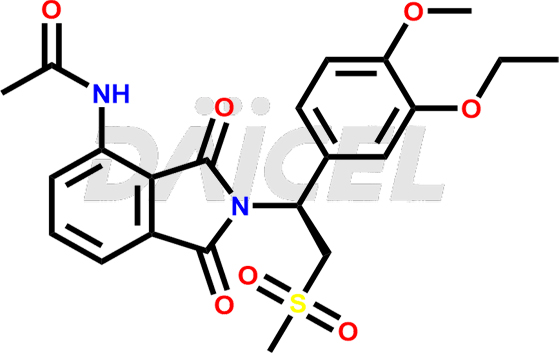
The chemical name of Apremilast is N-[2-[(1S)-1-(3-Ethoxy-4-methoxyphenyl)-2-(methylsulfonyl)ethyl]-2,3-dihydro-1,3-dioxo-1H-isoindol-4-yl]acetamide. Its chemical formula is C22H24N2O7S, and its molecular weight is approximately 460.5 g/mol.
Apremilast inhibits phosphodiesterase 4 (PDE4), causing an increase in intracellular cyclic adenosine monophosphate (cAMP) levels.
Apremilast Impurities and Synthesis
Apremilast may contain impurities formed during the manufacturing1 or storage of the drug. These impurities can be related to the starting materials, intermediates, or the final product. The impurities in a drug can affect its safety, efficacy, and quality, which is why it is necessary to identify and quantify them. Impurities in Apremilast can form due to several factors, such as degradation of the active pharmaceutical ingredient (API) or excipients, interaction with packaging materials, exposure to moisture or light, or incomplete chemical reactions during manufacturing. It is essential to synthesize and analyze the API and its impurities to ensure its quality, safety, and efficacy.
Daicel Pharma offers a Certificate of Analysis (CoA) for Apremilast impurity standards, which includes Apremi+C39:C41 Last Impurity RS-9, Apremilast 2-Acetamido Benzoic Acid Impurity, Apremilast 3-Acetamido Benzoic Acid Impurity, Apremilast Amino Sulfone Impurity, Apremilast Des Acetyl 4-Desmethyl Impurity, Apremilast Impurity RS-7, and O-Desmethyl Apremilast. The CoA is produced from a cGMP-compliant analytical facility and includes comprehensive characterization data, such as 1H NMR, 13C NMR, IR, MASS, and HPLC purity2. Additional characterization data, such as 13C-DEPT and CHN, can also be provided on request. Daicel Pharma can create unknown Apremilast impurities or degradation products and supply labeled compounds to evaluate the effectiveness of Apremilast. Further, Daicel Pharma offers Apremilast-D3, a deuterium-labeled Apremilast standard, useful in bio-analytical research, such as BA/BE studies. Each delivery has a complete characterization report.
References
FAQ's
References
- Schafer, Peter H.; Muller, George W.; Man, Hon-Wah; Ge, Chuansheng, (+)-2-[1-(3-Ethoxy-4-methoxyphenyl)-2-methylsulfonylethyl]-4-acetylaminoisoindoline-1,3-dione: methods of using and compositions thereof, Celgene Corporation, United States, US6962940B2, November 8, 2005
- Xiong, Kaihe; Ma, Xingling; Cao, Na; Liu, Lei; Sun, Lili; Zou, Qiaogen; Wei, Ping, Identification, characterization and HPLC quantification of impurities in apremilast, Analytical Methods, Volume: 8, Issue: 8, Pages: 1889-1897, 2016
Frequently Asked Questions
How are the Apremilast impurities regulated?
Impurities in Apremilast are regulated by various international and national guidelines, such as the International Council for Harmonization (ICH) and the United States Pharmacopeia (USP).
What is the role of analytical testing in detecting impurities in Apremilast?
Analytical testing helps detect impurities in Apremilast by providing accurate and reliable data on their presence and concentration.
How are Apremilast impurities quantified?
Apremilast impurities are quantified by comparing the peak area or impurity height to that of the active pharmaceutical ingredient (API) in a chromatogram.
What are the temperature conditions required to store Apremilast impurities?
Apremilast impurities are stored at a controlled room temperature between 2-8 °C or as indicated on the Certificate of Analysis (CoA).
Note: Products protected by valid patents by a manufacturer are not offered for sale in countries having patent protection. The sale of such products constitutes a patent infringement, and its liability is at the buyer's risk.


